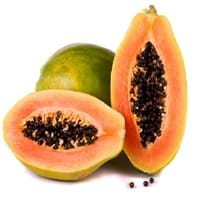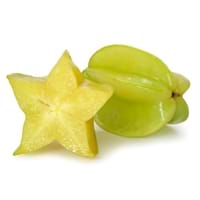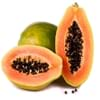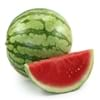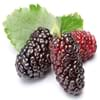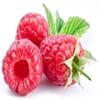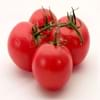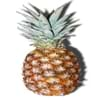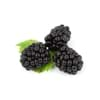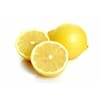Health Benefits
Arthritis prevention, Asthma treatment, Cancer prevention, Heart care, Prevents macular degeneration, Prevents rheumatoid
Cancer prevention, Heat stroke treatment
General Benefits
Anti-inflammatory properties, Boosts immune system, Digestive aid, Healing of wounds, Maintains healthy cholesterol level, Strengthens bones
Anti oxidant properties, Anti-inflammatory properties, Digestive aid, Maintains healthy cholesterol level, Treatment of sore eyes
Skin Benefits
Anti-aging benefits, Hydrates skin, Skin revitalization, Treatment of acne, Treatment of dark spots
Anti-aging benefits, Heals sunburn, Skin rejuvenation
Hair Benefits
Good conditioner, Promotes longer and healthier hair, Softening mask, Treatment of dandruff
Promotes longer and healthier hair, Protects hair
Allergy Symptoms
Abdominal pains, Carotenemia on excessive consumtion, Latex Allergy
NA
Side Effects
Allergic reaction, Skin problems, Possibly unsafe during pregnancy
Nausea, Vomiting
Best Time to Eat
As a snack in the late afternoon, Don't consume at night and before bed, Don't eat after meal
As a snack in the late afternoon, Eat the fresh ones, avoid mixing with any other foods, don't eat after meal., Strictly avoid empty stomach
Vitamin B5 (Pantothenic Acid)
Vitamin C (Ascorbic Acid)
Vitamin K (Phyllochinone)
Calories in Fresh Fruit with Peel
Not Available
Calories in Fresh Fruit without Peel
Not Available
Calories in Frozen Form
Not Available
Calories in Canned Form
Not Available
Calories in Jam
Not Available
Calories in Pie
Not Available
Type
Melon, Tree fruit
Tree fruit
Season
All seasons
Autumn, Spring, Summer
Varieties
Coorg Honey Dew, Pusa Dwarf, Pusa Giant, Pusa Majesty, Pusa Delicious, Pusa Dwarf, Solo, Ranchi, Taiwan-785 and Taiwan-786
King, Bell, Sri Kembangan, Arkin and Fwang Tung
Color
Orange, Yellow
Golden yellow, Green
Inside Color
Orange
Yellowish Green
Shape
Oval
Oval and Star(Cross section)
Taste
Luscious, Sweet
Crisp, Juicy, Sweet
Origin
Mexico, Central America
Sri Lanka
Grows on
Trees
Not Available
Soil Type
Rocky, Sandy, Well-drained
Loam, Well-drained
Climatic Conditions
Warm, Without frosts
Moist, Warm to hot climate
Facts about
- Papaya seeds show contraceptive effects in male monkeys.
- Their seeds are used as a replacement for black pepper in some nations due to peppery taste.
- Papaya is known by funny names like paw paw or papaw and the mamao.
- When carambola is cut horizontally, it forms a star.
- It is believed that carambola helps to cure hangover.
- Entire carambola is edible, including its skin.
- 2 varieties of carambola are cultivated: tart & sweet.
Top Producer
India
Taiwan
Other Countries
Brazil, Indonesia, Mexico, Nigeria
Australia, Guyana, India, Israel, Malaysia, Philippines, United States of America
Top Importer
United States of America
Europe
Top Exporter
Mexico
Malaysia
Botanical Name
Carica papaya
Averrhoa carambola
Synonym
Not Available
Not Available
Subkingdom
Tracheobionta
Tracheobionta
Division
Magnoliophyta
Magnoliophyta
Class
Magnoliopsida
Magnoliopsida
Subclass
Dillenhidae
Rosidae
Order
Brassicales
Oxalidales
Family
Caricaceae
Oxalidaceae
Species
C. papaya
A. carambola
Generic Group
Papaya
Not Available
Difference Between Papaya and Carambola
We might think that Papaya and Carambola are similar with respect to nutritional value and health benefits. But the nutrient content of both fruits is different. Papaya and Carambola Facts such as their taste, shape, color, and size are also distinct. The difference between Papaya and Carambola is explained here.
The amount of calories in 100 gm of fresh Papaya and Carambola with peel is Not Available and 31.00 kcal and the amount of calories without peel is 43.00 kcal and Not Available respectively. Thus, Papaya and Carambola belong to Low Calorie Fruits and Low Calorie Fruits category.These fruits might or might not differ with respect to their scientific classification. The order of Papaya and Carambola is Brassicales and Oxalidales respectively. Papaya belongs to Caricaceae family and Carambola belongs to Oxalidaceae family. Papaya belongs to Carica genus of C. papaya species and Carambola belongs to Averrhoa genus of A. carambola species. Beings plants, both fruits belong to Plantae Kingdom.
